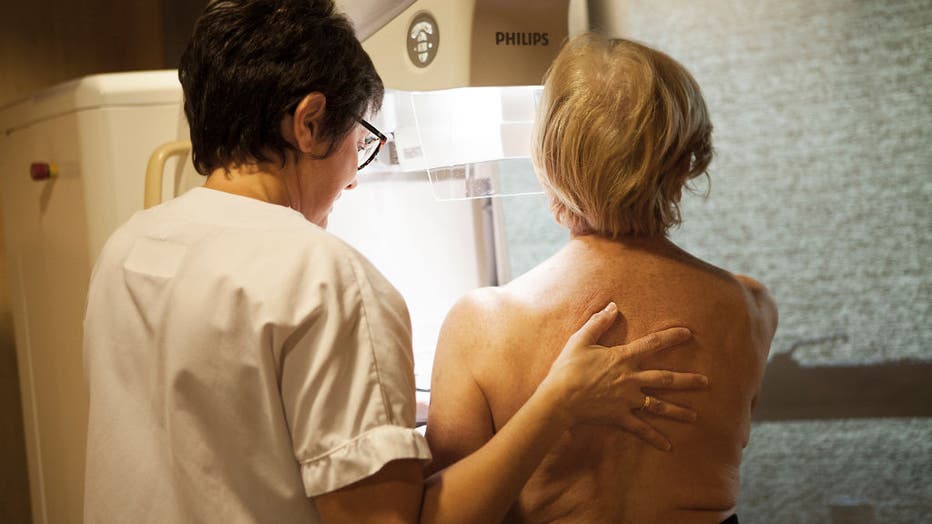Breast Cancer Awareness Month: Ways to reduce risk and detect it early
October is Breast Cancer Awareness month, a campaign that aims to raise awareness about the disease, how to prevent it, and help fund research that leads to better ways to treat it.
Breast cancer is the second-most common cancer in women after skin cancer, according to the National Institutes of Health. There have been an estimated 281,550 new cases diagnosed in 2021, roughly 14.8% of all new cancer cases in the United States.
Nearly 13% of women will be diagnosed with breast cancer at some point during their lifetime, statistics from the National Cancer Institute show.
But breast cancer deaths rates have also been declining in the U.S. since the early 1990s, though some racial disparities still exist.
Here are the steps to take to reduce the risk of breast cancer and how to detect it early:
Breast cancer risk factors
Some of the main factors that affect a person’s chance of developing the disease include being a woman, being older and having changes to the BRCA1 or BRCA2 genes, according to the U.S. Centers for Disease Control and Prevention.
Most breast cancers are found in women who are age 50 or older. Beyond age, there are some other factors that a person can’t change, including inherited genetic mutations, having dense breasts, previous treatment using radiation therapy, and having a personal history of breast cancer or certain non-cancerous breast diseases.
A woman’s risk for breast cancer is also higher if she has a mother, sister, or daughter — or multiple family members on either her mother’s or father’s side of the family — who have had breast or ovarian cancer. Having a first-degree male relative with breast cancer also raises a woman’s risk, the CDC says.
"Having a risk factor does not mean you will get the disease, and not all risk factors have the same effect. Most women have some risk factors, but most women do not get breast cancer," the CDC says.
RELATED: Swollen lymph nodes can be side effect of COVID-19 vaccine and confused for cancer, doctors say
How to reduce the risk of breast cancer
While there is no sure way to prevent breast cancer, there are some things individuals can change to reduce their risk, experts say.
Exercising regularly, maintaining a healthy weight and drinking little to no alcohol can help lower the risk, according to the CDC. The agency also advises people taking hormone replacement therapy or birth control pills to ask their doctor about the associated risks.
Breastfeeding children, if possible, can also help reduce the risk.
"Staying healthy throughout your life will lower your risk of developing cancer, and improve your chances of surviving cancer if it occurs," the CDC says on its website.
Early detection of breast cancer
When breast cancer is detected early and is in the localized stage, the five-year relative survival rate is 99%, according to the American Cancer Society.
Early detection includes doing monthly breast self-exams and scheduling regular clinical breast exams and mammograms.
People have different symptoms of breast cancer, and some do not have any signs or symptoms at all — which is why regular screenings are important.
The American Cancer Society says women ages 40 to 45 should have the choice to start annual breast cancer screenings with mammograms if they wish, and women ages 45 to 54 should get mammograms every year.
Women 55 and older should switch to mammograms every two years or can continue yearly screening.

FILE - A woman undergoes a routine mammogram at a radiology center. (Photo by: BSIP/Universal Images Group via Getty Images)
Symptoms of breast cancer
Some of the most common warning signs of breast cancer can include a new lump in the breast or underarm area, thickening or swelling of part of the breast, changes to the skin on the nipple area or breast, nipple discharge other than breast milk or pain in any area of the breast.
Individuals who notice any worrying signs or symptoms should contact their doctor right away.
The CDC notes that many conditions can cause lumps in the breast, including cancer, but most breast lumps are caused by other medical conditions. The two most common causes of breast lumps are fibrocystic breast condition and cysts.
"No breast is typical," the CDC says online. "Most women say their breasts feel lumpy or uneven. The way your breasts look and feel can be affected by getting your period, having children, losing or gaining weight, and taking certain medications. Breasts also tend to change as you age."
Treatments of breast cancer
Breast cancer is treated in several ways, depending on the type and how far it has spread in the body.
Treatments can include surgery where doctors cut out cancer tissue, chemotherapy to shrink the cancer cells, radiation therapy to kill the cancer cells and hormonal therapy that blocks cancer cells from getting the hormones they need to grow.
Biological therapy can also be an option, which works with the body’s immune system to help it fight cancer cells.
RELATED: Breast cancer pill shows benefit in certain hard-to-treat cases
This story was reported from Cincinnati.

